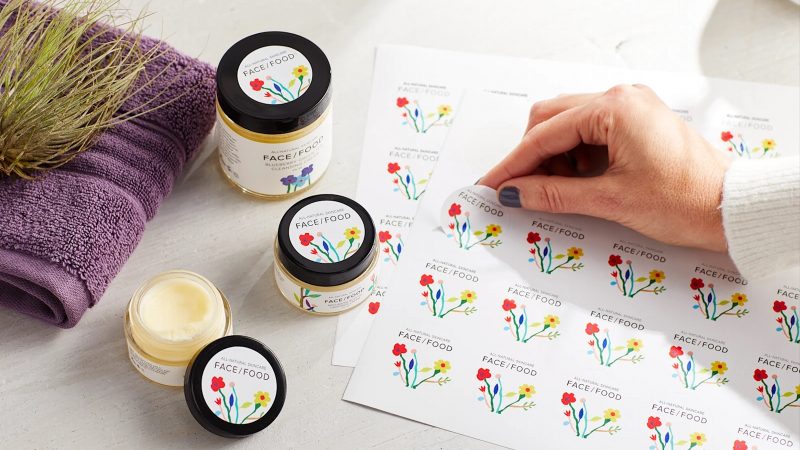How to Start Creating Effective Packaging Strategies for E-commerce

Why is packaging important? The rise of e-commerce has transformed the way we shop, with more consumers turning to online platforms for convenience and a wide array of choices.
In this digital age, creating an effective packaging strategy for e-commerce is crucial for businesses looking to thrive in the online marketplace.
Packaging is no longer just a means to protect products; it’s a powerful tool for brand recognition, customer satisfaction, and sustainability.
Let’s now explore the key steps to start creating effective packaging strategies for e-commerce to help you create a profitable brand and business.
1. Understand Your Audience and Brand Identity
Effective packaging strategies begin with a deep understanding of your target audience and your brand identity. You need to know who your customers are, what they value, and what kind of packaging resonates with them. Are they environmentally conscious? Do they prioritize convenience? Are they looking for premium or budget-friendly options?
Similarly, a strong grasp of your brand identity is essential. What does your brand stand for? What values and messages do you want to convey through your packaging?
Your packaging should align with your brand’s identity and the expectations of your customers. Consider conducting market research and surveys to gain insights into your audience’s preferences.
2. Prioritize Sustainability
Sustainability is a core consideration in modern packaging strategies. E-commerce businesses should aim for environmentally friendly packaging options to meet the growing demand for sustainability. This includes using recyclable, biodegradable, or reusable materials.
Consider packaging solutions that minimize waste and reduce the carbon footprint of your shipments. Eco-friendly packaging not only appeals to environmentally conscious consumers but also reflects positively on your brand’s commitment to sustainability.
3. Optimize for Protection and Cost-Efficiency
While sustainability is important, it should not come at the expense of product protection. Your packaging must ensure that products arrive intact and undamaged. Finding the right balance between protection and sustainability is key to a successful packaging strategy.
Additionally, cost-efficiency is a crucial factor, especially for businesses that ship large volumes of products. Invest in packaging solutions that are cost-effective while maintaining the necessary level of protection. Work with suppliers who can provide affordable and durable materials.
4. Consider Branding and Design
Your packaging design should be an extension of your brand identity and an opportunity to make a lasting impression on customers. An attractive, well-designed package can create a sense of anticipation and excitement when the product is received.
Consider the use of your brand colors, logo, and taglines on the packaging. The design should be consistent across all your products to create a unified brand image. If your budget allows, consider custom packaging that uniquely represents your brand.
5. Personalization and Customization
E-commerce businesses can leverage personalization and customization to create a memorable unboxing experience. Customized packaging can include personalized messages, labels, or even tailored product recommendations based on the customer’s previous purchases.
Such personalization not only makes customers feel valued but also encourages brand loyalty and repeat purchases. Customers are more likely to share their personalized unboxing experiences on social media, leading to increased brand visibility.
6. Focus on Convenience
E-commerce customers value convenience, and your packaging should reflect this. Consider packaging that is easy to open, resealable, and straightforward in design. A good example is using custom pillow pouches with fin seals and tear notches for easy consumption on the go.
Overly complex packaging can frustrate customers, especially if it’s difficult to open or dispose of.
Efficient packaging can also save time for your packing and shipping teams, which can translate into cost savings and improved productivity.
7. Minimize Packaging Waste
Packaging waste is a concern for both customers and the environment. Opt for packaging that minimizes waste and uses materials efficiently. Right-sized packaging, which matches the product’s size, is a practical way to reduce waste and minimize shipping costs.
Consider packaging solutions that use less plastic or utilize sustainable materials—a good example is switching to custom flexible packaging from rigid packaging.
You can also include recycling instructions on your packaging to encourage customers to dispose of it responsibly.
8. Mobile-Friendly Packaging
With the increasing use of mobile devices for online shopping, it’s essential to ensure that your packaging is mobile-friendly. This means considering how your packaging design and branding elements will appear on a smaller screen. QR codes, for instance, can be included to provide customers with quick access to additional product information or promotional offers.
9. Consider Returns and Exchanges
In e-commerce, returns and exchanges are common. Your packaging strategy should account for this by providing customers with an easy way to return products. Include clear instructions and pre-printed return labels to simplify the process. A hassle-free returns experience can positively impact customer satisfaction and retention.
10. Test and Iterate
Once you’ve developed your packaging strategy, it’s crucial to test it in real-world scenarios. Send out sample packages and gather feedback from customers. Pay attention to how well the packaging protects the products, the unboxing experience, and any suggestions for improvement.
It’s also essential to stay agile and be willing to iterate and adapt your packaging strategy based on customer feedback, changing market trends, and advancements in packaging technology.
Harness The Power of Effective Packaging Strategies
In the world of e-commerce, effective packaging strategies are more than just a practical necessity; they are a vital tool for brand recognition, customer satisfaction, and sustainability. By understanding your audience, prioritizing sustainability, optimizing for protection and cost-efficiency, and focusing on branding and design, you can create packaging that sets your brand apart.
Personalization, convenience, and an emphasis on minimizing waste are also essential aspects of a successful packaging strategy. Additionally, staying open to customer feedback and being willing to iterate and adapt your strategy will help ensure your packaging remains effective in a constantly evolving e-commerce landscape.
Remember, your packaging is often the first physical interaction a customer has with your brand, making it a critical component of your overall customer experience. An effective packaging strategy can leave a lasting positive impression and contribute to the success of your e-commerce business.






![[5 Summer Gardening Tips to Keep Your Garden Growing Strong]](https://healthmaintaintips.com/wp-content/uploads/2022/05/Starting_Seeds_Right_In_Your_Garden_header-800x450.jpg)